Narrowboats - introduction
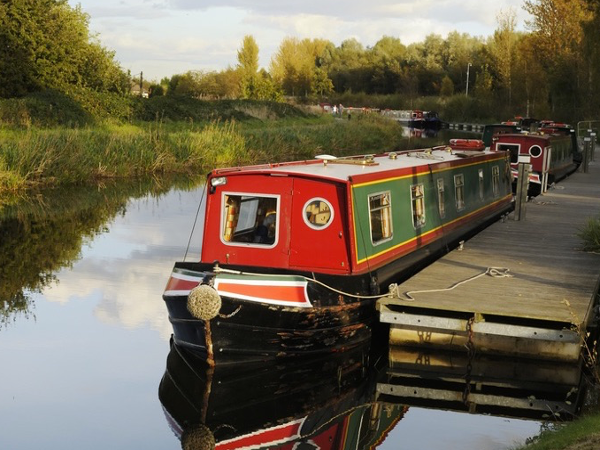
“One of the greatest pleasures on this earth is steering a narrowboat and, assuming there aren’t too many hazards ahead, eating a butty stuffed full of bacon, sausage, egg and tomato, washed down with strong tea from a pint pot.” – Mike Lucas
Contents
What are narrowboats?
A narrowboat is a boat for living in, transporting cargo and / or travelling on canals and inland waterways. Modern narrowboats are generally made of steel, though some are aluminium, and many older craft are wooden. They are 6ft 10in (2.1m) wide, up to 70ft (21.3m) long and can cruise almost any waterway, but are not well suited to tidal rivers. ‘Wide beam’ boats (barges) also exist, and are, as the name suggests, wider steel craft. They are more spacious and therefore make for more comfortable living, but are unsuited to navigating canal locks, which are usually 7ft (2.13m) wide.
History
The majority of Britain’s canals were constructed in the 18th century to transport industrial goods and raw materials. Cargo boats were initially drawn by horses until after WWII when they were finally replaced entirely by engines. These powerful animals could pull much bigger loads over frictionless water than by road and the huge jump in productivity led to an explosion in use of canal freight, reduced the price of coal and powered the Industrial Revolution.

The canals eventually lost ground to railways, and later to motorways. The waterways network was nationalised in 1948, around the time canals first began to be used for leisure by a population with increasing amounts of free time. Despite this new potential, however, by the 1950s the waterways had largely fallen into disrepair and become unsavoury backwaters. A growing industrial heritage enthusiast movement led to a number of restoration projects between the 1950s and 1970s which, combined with an increased interest in boating and recreational use, helped bring them back into favour.
Today, Britain’s 2000 miles of waterways are experiencing something of a second golden age. Canals are popular places for walking, cycling and picnics, and the tour and leisure industry is booming. Boat numbers are up: some 33,000 currently afloat, compared to 28,000 10 years ago. More and more people from all walks of life are turning to narrowboats as a viable alternative to owning a house or flat. Perhaps unsurprisingly, London has seen the biggest growth in boat use in recent years, with a 72% increase in boat numbers since 2012.

Whilst today canal use is largely centred on leisure or living, they still carry freight in certain parts of the country – mostly in the north of England where the wider canals are suitable for large modern freight barges. Horse boating is now relatively rare although a handful of enthusiasts scattered across the country still keep the tradition alive.
What are the benefits of narrowboats?
The pace of life tends to be slower and it brings you into close contact with nature. Like parks, canals act as green lungs for the cities and are home to a huge variety of wildlife, from water voles to herons, kingfishers, swans, ducks and many species of fish (a good indication of improving water quality). Many canals and towpaths are listed as sites of special scientific interest.
There’s a strong a sense of community on the water since canal living is idyllic but not easy: there are ongoing repairs, maintenance and other challenges, so canal dwellers tend to help each other out. The nomadic nature of some canal folk also helps to connect different communities along the waterways. It’s an outdoorsy kind of life too, which means fresh air and exercise.

Twenty years ago, canal-side developments were built to face away from the water, but today they face onto it; a waterfront location has become very desirable and investment in the canals and surrounding areas is on the up. This spurs regeneration as developers are encouraged and motivated to improve the stretches they build along. Increased investment, use of and interest in the canals benefits local economies by creating opportunities for small businesses. narrowboats have been given a new and expanded lease of life and can be found repurposed for day trips, as hotels, as cultural, business or art event spaces, floating bookshops, food shops or markets, barbers, cafes and more.
Narrowboat living has the potential to be lower-impact than a traditional bricks-and-mortar house. For a start, boats don’t take up any land. They are much smaller and so use less energy to heat up and keep warm. Everything that goes on or off a boat has to be moved by you, so you tend to be more conscious of the resources you’re using and how much waste you produce.
What can I do?
Try taking a narrowboat trip or holiday first to see if you like it – it’s not for everyone. It can be hard work and you need to do your research before committing to buying a boat, particularly if you’re going to live on it. There are hidden costs and continuous maintenance, repairs and tweaking required, which can mean getting your hands dirty or forking out for specialist work. Running a boat has been likened to having a part-time job, or to running a house and car simultaneously. It all adds up – so, while the initial investment may be less than buying a house, only get a boat if you want to embrace the lifestyle, not primarily to save money.
Consider taking a course in boat handling, especially if you’re planning to do it regularly. Learning the different parts of a boat and how they work, as well as skills like tying knots, steering, navigating, mooring and negotiating locks and other things you’ll run into (hopefully not literally) along the way will all make boating safer and more enjoyable.

Buying a boat
Once you’re convinced it’s the life for you, then it’s time to think about buying a boat.
First, check the dimensions are suitable for the waterways you want to use. Canals and rivers in Yorkshire have shorter locks so your boat must be no longer than 56ft if you plan to cruise there. Also bear in mind that river locks and bridges often get smaller the further inland you travel.
You can buy new, second-hand or have a boat built. If buying new, take some time to visit builders and showrooms and discuss what you want with them. Some boats are built using traditional crafts and materials, others are more modern or unconventional, but almost all are handcrafted to some degree. You can also buy standard models and add refinements yourself.

If buying second-hand, prices can vary enormously depending on age and condition. Expect to spend more on maintenance than with a new boat, so always buy the best-maintained one you can afford and check that spares and supplies are readily available for that model. Ensure you buy from a reputable broker or, if buying direct, make sure the person selling is the lawful owner (ask for a legal bill of sale). Even if you’re buying from a broker, you need to check all the information provided by the seller is accurate yourself. Once you’re satisfied, it’s a bit like buying a house: you pay a deposit to secure the boat and the sale is then pending a satisfactory survey of the boat’s condition (cost £350-£400). The results of the survey may give you some leverage to negotiate the price, or let you know whether you need to budget for repairs. As with a house, you should get your own survey done rather than just relying on the vendor’s.
If you have to borrow money to buy your boat, be aware that rates are higher than for house mortgages. Also, a boat is typically a depreciating asset, unlike flats/houses.
Whether you’re buying new or second-hand, it’s worth taking some time to talk to existing boat owners to get the benefit of their experience.

Other costs
(average costs based on the Canal & River Trust’s 2013 biannual boat owners survey)
- Boat safety certificate: like an MOT for your boat, required every four years. Cost: £150 + any repairs. You need a BSC or exemption to apply for a….
- Licence: obligatory for all boats, valid for 12, 6 or 3 months, helps pay for upkeep of the waterways and includes rules for their safe and respectful use. 12-month licenses range from £510-£1100, depending on boat length. When applying, you need to choose between a houseboat or pleasure boat licence. A houseboat is, as the name suggests, used primarily for living on rather than for navigation. Bear in mind a boat over 20 years old may carry additional licensing requirements.
- Mooring: could be:
1) home mooring, which you own or rent and where you leave your boat permanently. Like property prices, these vary enormously (between £2,000 and £18,000 a year depending on location). Home moorings are available from private landowners and marinas, or can be leased annually and available through auction from the Canal & River Trust.
2) no mooring, meaning you have to ‘continuously cruise’, staying no longer than 14 days at a particular mooring before moving on. Remember to factor in the costs of moving around constantly, as well as things like travelling to work.
Moorings are not transferable when you sell a boat, but you can sell them separately or get a proportional refund on any months not used. - Insurance: approx. £200. Third party as a minimum is required to apply for a licence. You may also want to take out comprehensive cover for your boat and contents. Note that contents insurance is likely to be more expensive than for a house or flat.
- Diesel – av. £360 per year for propulsion alone; if living full-time on your boat the cost may be considerably higher.
- Other fuel costs – heating, generator etc. – c. £200. Again, this will increase for full-time on-board living.
- Pumping out (emptying your toilet) £20 per month if full-time.
- ‘Blacking’ the hull every 3-4 years to protect from corrosion: £350 to take your boat out of the water (you might also have to travel for this) + £500 for the work + cost of alternative accommodation while you can’t live on the boat (about a week).
- Ongoing maintenance by specialist marine/boating professionals.
- Launderette (most boats don’t have a washing machine).
- Keys to access locked bridges, toilets, water supplies etc.
- Maps & guides.

Environmental considerations
There are a number of things you need to be aware of to avoid polluting waterways and to reduce the environmental impact of your boat.
Waste
- Greywater from sinks, bathrooms, washing machines etc. goes straight into the waterways, so it’s essential to use eco-friendly cleaning and personal products to avoid discharging any toxic or harmful liquids.
- Sewage: toilets need to be emptied regularly, and never overboard. Composting toilets are great as they use no chemicals and the waste can be composted (assuming you have a heap handy to put it on). In London, which has a high density of people living on boats, there is now a move to have special boats to come and relieve you of your doings. ‘Cassette’ toilets have a holding tank and waste tank (both portable). The toilet is flushed (with water and eco-friendly chemicals) from the top holding tank. Pump-out toilets are flushed from the boat’s holding tank into a large waste tank. Eco-friendly chemicals can be used in both tanks, and the waste tank emptied regularly at a disposal point.
- On-board waste – recycle as much as possible at points provided along the waterways. Never allow rubbish to enter the environment. Compost as much as you can, if it’s an option.
- Maintenance – use only eco-friendly products and fresh water, and take care no debris enters the water.
Resource efficiency
- Insulation is important for fuel efficiency on board. Wool is a good natural material, although far less common than polystyrene or spray foam. Double glazing is also important; small portholes will retain more heat than large windows.
- Save water (you have to survive on what’s in your tank at any one time). Washing machines are heavy on water and power so if you have one, keep it as small as possible and go for the most energy-efficient model you can afford.
- Always choose FSC-certified or recycled wood products.
- Forage, reuse and repurpose as much as you can. Buy second-hand and sell or give away your old kit.
- Boating affords good opportunities for wild food foraging; you can grow your own on the roof of the boat.

Fuel & power
- Avoid fuel spills and leaks. If you do spill, never use detergents.
- Cook or cool food & drinks in energy-efficient ways. Install low-energy lighting and consider a more efficient engine.
- Think about the carbon footprint of the type of fuel you use. Consider alternatives like (sustainably-produced) biodiesel.
- The main heating fuels are: wood – if you can source it responsibly, and don’t burn it near anyone’s boat or washing; diesel is a fossil fuel, with associated carbon and pollution emissions. Tax on diesel varies depending on whether it’s for propulsion, domestic use or electricity generation so it’s advisable to read up on this to stay on the right side of the law; gas – also a fossil fuel, used for propulsion and heating, and radiator systems are available; coal – another fossil fuel, used to complement wood stocks when necessary. If using, always buy smokeless.
- Banks of batteries are used to power appliances; it’s good practice to top batteries up, or run power-hungry equipment when you’re on the move, to take advantage of engine power.
- Solar panels mounted on the roof are a clean, alternative power source – and they don’t make any noise.

Wildlife
- Avoid going too fast as this creates wash that can disturb animals and erode banks. Always keep dogs under control.
- Limit the spread of invasive non-native species along waterways by checking and cleaning your hull and equipment that may have come into contact with the water before moving onto a new stretch of waterway. Avoid steering through patches of invasive species such as floating pennywort.

Safety
There are a number of safety procedures to be adhered to at all times so you know what to do in the event of accidents or falls. You also need to recognise stream conditions like fast-flowing water, know how to avoid waterborne diseases and avoid or deal with human-related nuisances like vandalism and aggression in urban areas.
Specialist(s)
Thanks to Joe Coggins & Fran Read of the Canal & River Trust, Loretta Spridgeon of The Green Blue and Beryl McDowall from the Residential Boat Owners’ Association for information, and the Canal & River Trust for some of the images.
The specialist(s) below will respond to queries on this topic. Please comment in the box at the bottom of the page.

Beryl McDowall has lived on a variety of boats for over fifty years. Most were narrow boats of varying lengths, with the odd wooden river cruiser. She also spent years living on boats carrying Roses Lime Juice on the Grand Union Canal, and later sand/gravel on the River Soar. She raised her son during this time. She’s been General Secretary and Chair of the Residential Boat Owners’ Association, and is now Editor of their magazine, Soundings.

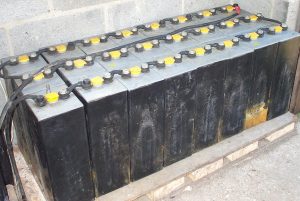
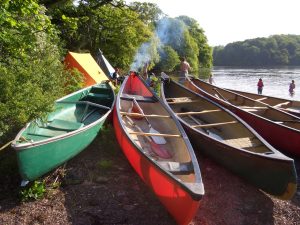
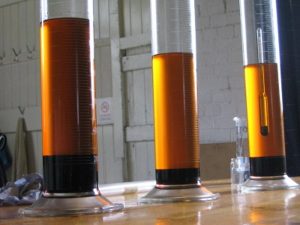
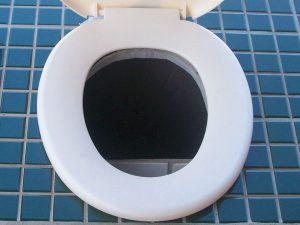
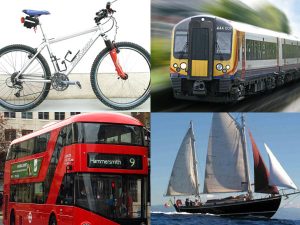
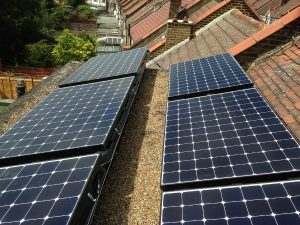
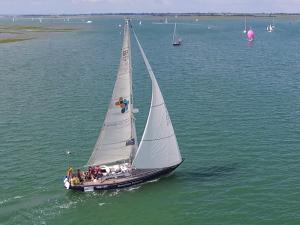
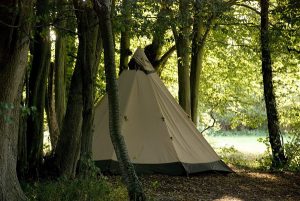

1 Comment
Hi Beryl,
I am looking to purchase a narrowboat for around £50-60k as London rents are now just too much, and purchasing a small flat/house is not even worth thinking about!
I would like to ask your expertise regarding narrowboat diesel consumption i.e. if I purchase a narrowboat that has a 200L fuel tank capacity for diesel, how far could I travel (in miles) on a single tank of fuel.
As I own a car, I know when I put 45L of petrol in the tank it will give me at least 350 miles (which I get through in around a month at a current cost of about £65).
I intend to be a constant cruiser on the Lee Navigation and would like to travel at least a mile or two, moor up for 14 days before moving off again for another mile or two, moor up for another 14 days and then travel another mile etc so that I can travel from Springfield Marina (which has diesel pumps) down to Limehouse Marina along the Lee Navigation, and then back up to Springfield Marina via the Grand Union Canal Hertford.
As I have no idea about diesel narrowboat engines, I was wondering if I would have to keep on refuelling along the way, or will I just have to fill my tank once a year in order to make that journey over the course of a year?
I believe if I stop 26 times, I will have covered my 20 miles of constant cruising as per CRT stipulations.
Many thanks,
Steven-Andrew Griffith